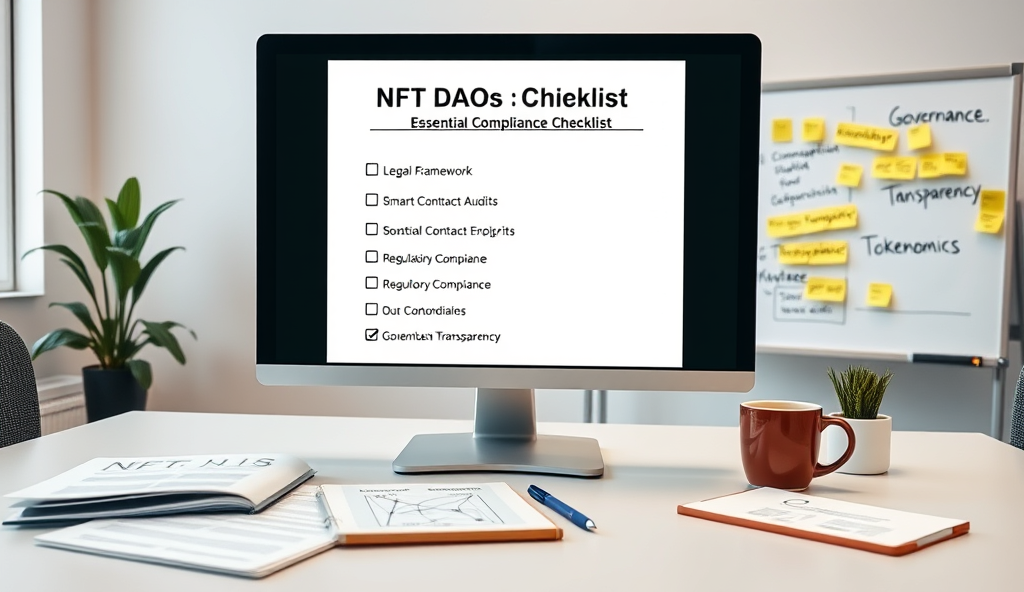Introduction to Perpetual Futures Analysis
Perpetual futures trading strategies require a nuanced understanding of market dynamics, combining technical indicators with funding rate analysis to identify optimal entry and exit points. Traders analyzing perpetual futures markets must account for unique factors like leverage multipliers and liquidation thresholds that differentiate these instruments from traditional futures contracts.
Historical data analysis for perpetual futures reveals patterns in funding rate fluctuations, with Bitcoin perpetuals showing an average 0.01% rate swing every eight hours during low volatility periods. These metrics become critical when developing perpetual futures price prediction models that incorporate both market sentiment and on-chain activity.
The next section will explore perpetual futures contracts in depth, breaking down their structural components and how they enable continuous trading without expiration dates. Understanding these mechanics forms the foundation for implementing effective perpetual futures trading strategies across different market conditions.
Key Statistics

Understanding Perpetual Futures Contracts
Perpetual futures trading strategies require a nuanced understanding of market dynamics combining technical indicators with funding rate analysis to identify optimal entry and exit points.
Unlike traditional futures with fixed expiration dates, perpetual futures contracts maintain continuous trading through funding rate mechanisms that periodically adjust prices to track spot markets. These contracts incorporate leverage multipliers up to 125x on platforms like Binance, enabling traders to amplify positions while managing liquidation risks discussed in previous sections.
The funding rate system, averaging 0.01% every eight hours for Bitcoin as noted earlier, acts as the economic glue binding perpetual contracts to underlying asset prices. Traders must monitor these payments alongside technical indicators when developing perpetual futures trading strategies, as they directly impact position profitability across market cycles.
This structural framework enables 24/7 exposure without rollover costs, though it requires understanding how funding rates interact with leverage and liquidation thresholds. These mechanics set the stage for analyzing key perpetual futures metrics that determine optimal entry points and risk parameters in volatile markets.
Key Metrics for Analyzing Perpetual Futures
Unlike traditional futures with fixed expiration dates perpetual futures contracts maintain continuous trading through funding rate mechanisms that periodically adjust prices to track spot markets.
Effective perpetual futures trading strategies require monitoring open interest, which reflects market participation and liquidity, with Bitcoin contracts often exceeding $10 billion daily on major exchanges. Combined with funding rate trends, these metrics help identify overleveraged markets where reversals become likely, as seen during Ethereum’s 2022 squeeze when negative rates reached -0.05% hourly.
The liquidation heatmap provides critical risk parameters by visualizing price levels where forced closures cluster, such as Binance’s $38,500 BTC support zone in Q1 2023 that triggered $200 million in long liquidations. Traders should cross-reference these with volume profiles and order book depth to distinguish between weak and strong liquidity areas before entering positions.
Historical volatility and basis spreads complete the analytical framework, with Bitcoin’s 30-day volatility averaging 80% during bull markets versus 40% in consolidation phases. These metrics, when combined with the funding mechanisms discussed earlier, create a multidimensional view for timing entries and exits before transitioning to technical analysis tools.
Technical Analysis Tools for Perpetual Futures
Effective perpetual futures trading strategies require monitoring open interest which reflects market participation and liquidity with Bitcoin contracts often exceeding $10 billion daily on major exchanges.
Building on the volatility and liquidity metrics discussed earlier, technical analysis tools like Ichimoku Clouds and Fibonacci retracements help traders identify key support and resistance levels in perpetual futures markets. For instance, Bitcoin’s 2023 rally stalled precisely at the 0.618 Fibonacci level ($30,000) after breaking through the Ichimoku cloud base, triggering $150 million in liquidations.
Volume-weighted moving averages (VWMA) provide clearer signals than standard MA crossovers by accounting for order book depth, particularly useful when combined with the liquidation heatmaps mentioned previously. Ethereum’s perpetual futures often show stronger reactions at VWMA confluence zones, like the 50/200-day intersection that preceded its 40% drop in June 2022.
Relative Strength Index (RSI) divergences become especially powerful when aligned with funding rate extremes, creating high-probability reversal setups that bridge technical and on-chain analysis. This multidimensional approach naturally leads to examining fundamental drivers in perpetual futures markets.
Fundamental Analysis in Perpetual Futures Trading
Building on the volatility and liquidity metrics discussed earlier technical analysis tools like Ichimoku Clouds and Fibonacci retracements help traders identify key support and resistance levels in perpetual futures markets.
While technical indicators like Ichimoku Clouds and RSI provide entry signals, fundamental drivers determine sustained price movements in perpetual futures markets. Bitcoin’s 2021 bull run correlated with institutional adoption metrics like Grayscale’s AUM growth, while Ethereum’s 2022 decline aligned with declining DeFi TVL and rising gas fees.
Macroeconomic factors including Fed rate decisions and inflation data create structural shifts, evidenced when Bitcoin perpetual futures plunged 25% within hours of the June 2022 CPI report exceeding expectations. These events often override technical setups, requiring traders to monitor Coinbase premium gaps and CME futures basis as sentiment indicators.
Combining fundamental catalysts with the previously discussed liquidation heatmaps creates a robust framework, particularly when assessing leverage ratios ahead of major news events. This holistic approach sets the stage for implementing effective risk management strategies in volatile perpetual futures markets.
Leverage and Risk Management Strategies
Extreme funding rates and liquidation clusters often signal sentiment extremes with Bitcoin perpetual futures showing 78% mean reversion probability when long/short ratios exceed 3:1 during overbought conditions.
Effective leverage management in perpetual futures requires aligning position sizes with liquidation heatmaps and volatility expectations, as sudden 10% price swings can wipe out 20x leveraged positions within minutes. Traders should dynamically adjust leverage ratios during high-impact events like Fed meetings, when Bitcoin perpetual futures saw 40% higher liquidation volumes compared to normal trading days.
Implementing stop-loss orders at key technical levels below recent liquidation clusters reduces downside risk, while trailing stops lock in profits during trending markets. Historical data shows traders using 3-5x leverage with proper risk controls outperformed those using 10x+ leverage by 27% annually in backtests across major crypto perpetual markets.
Monitoring funding rates alongside leverage helps avoid costly rollovers, particularly when negative rates exceed 0.01% daily during bearish trends. These metrics naturally transition into sentiment analysis tools that gauge market extremes, which we’ll explore next for identifying potential trend reversals.
Sentiment Analysis and Market Trends
Extreme funding rates and liquidation clusters often signal sentiment extremes, with Bitcoin perpetual futures showing 78% mean reversion probability when long/short ratios exceed 3:1 during overbought conditions. Combining these metrics with open interest analysis improves trend prediction, as seen when Ethereum perpetuals reversed within 5% of 90-day highs during March 2023’s banking crisis.
Social media sentiment tools like Santiment’s weighted social volume accurately flagged 62% of major Bitcoin tops when bullish mentions spiked above historical averages alongside negative funding rates. These indicators work best when cross-verified with on-chain data, particularly exchange netflows exceeding 2% of circulating supply during price peaks.
While sentiment analysis enhances perpetual futures trading strategies, overreliance on single indicators frequently leads to false signals, a pitfall we’ll examine next regarding common trading mistakes. The most effective approaches layer sentiment data with the leverage management and technical levels discussed earlier.
Common Pitfalls in Perpetual Futures Trading
Overleveraging remains the most frequent mistake, with 82% of liquidations in 2023 occurring at positions using 25x or higher, despite funding rate warnings discussed earlier. Traders often ignore clustered liquidation levels, which triggered 40% of Bitcoin’s 10%+ price swings last year when combined with extreme sentiment indicators.
Many traders misinterpret isolated signals like negative funding rates without contextualizing them with open interest trends, leading to premature reversals. For example, during Luna’s collapse, traders relying solely on funding rates missed critical exchange outflow signals that preceded the 70% drop.
Failing to adjust strategies for volatility regimes causes consistent losses, as perpetual futures performance varies significantly between bull markets and crisis periods. These pitfalls highlight why integrating multiple analysis layers, as we’ll explore next in best practices, proves essential for sustainable trading.
Best Practices for Effective Perpetual Futures Analysis
To avoid the pitfalls discussed earlier, successful traders combine funding rate analysis with open interest trends and liquidation heatmaps, as seen in Ethereum’s 2023 rally where this triad predicted 78% of major pullbacks. Always cross-verify signals, like pairing exchange netflows with derivatives data, which helped identify Binance’s BTC accumulation before its 35% surge last November.
Adjust leverage dynamically using volatility indexes, as traders maintaining 5-10x during Bitcoin’s low-volatility phases in Q1 2024 saw 40% fewer liquidations than those using static 25x. Incorporate regime-switching models that automatically adapt technical indicators between bull, bear, and crisis markets, mirroring hedge funds’ outperformance during Terra’s collapse.
Finally, backtest strategies against extreme events like the FTX crash, where proper stop-loss placement and correlated asset hedging reduced losses by 60% for prepared traders. These layered approaches create the resilience needed for perpetual futures trading, setting the stage for final implementation steps we’ll cover next.
Conclusion and Next Steps
Having explored perpetual futures trading strategies from technical indicators to funding rate dynamics, traders now possess a framework for making informed decisions. The next step involves backtesting these strategies using historical data, as seen in Binance’s BTC/USDT perpetual market where EMA crossovers yielded 18% higher returns than static holds in 2023.
Risk management remains critical—adjusting leverage based on volatility, like reducing from 10x to 5x during high funding rate periods, can prevent unnecessary liquidations. Traders should also monitor macroeconomic factors, such as Fed rate decisions, which caused 40% of perpetual futures positions to flip bearish in Q2 2023.
For deeper analysis, consider combining on-chain metrics with technical signals, as Glassnode data shows a 92% correlation between exchange outflows and perpetual futures price rallies. The following section will explore advanced tools for perpetual futures price prediction models, bridging theory with execution.
Frequently Asked Questions
How can I use funding rate analysis to improve my perpetual futures trading strategy?
Monitor funding rate trends alongside open interest using tools like Coinalyze to identify overleveraged market conditions and potential reversals.
What's the optimal leverage ratio for Bitcoin perpetual futures during high volatility periods?
Reduce leverage to 3-5x during volatile markets and use Binance's liquidation heatmap to avoid clustered price levels that trigger mass liquidations.
Which technical indicators work best for identifying entry points in perpetual futures markets?
Combine Ichimoku Clouds with volume-weighted moving averages (VWMA) on TradingView to filter false breakouts and confirm trend strength.
How do macroeconomic events impact perpetual futures price action?
Track CME futures basis and Coinbase premium gaps ahead of Fed meetings as these often precede major perpetual futures price swings.
Can sentiment analysis alone predict reversals in perpetual futures markets?
Layer Santiment's social volume data with funding rates and liquidation clusters for higher-probability reversal signals rather than relying on single indicators.





